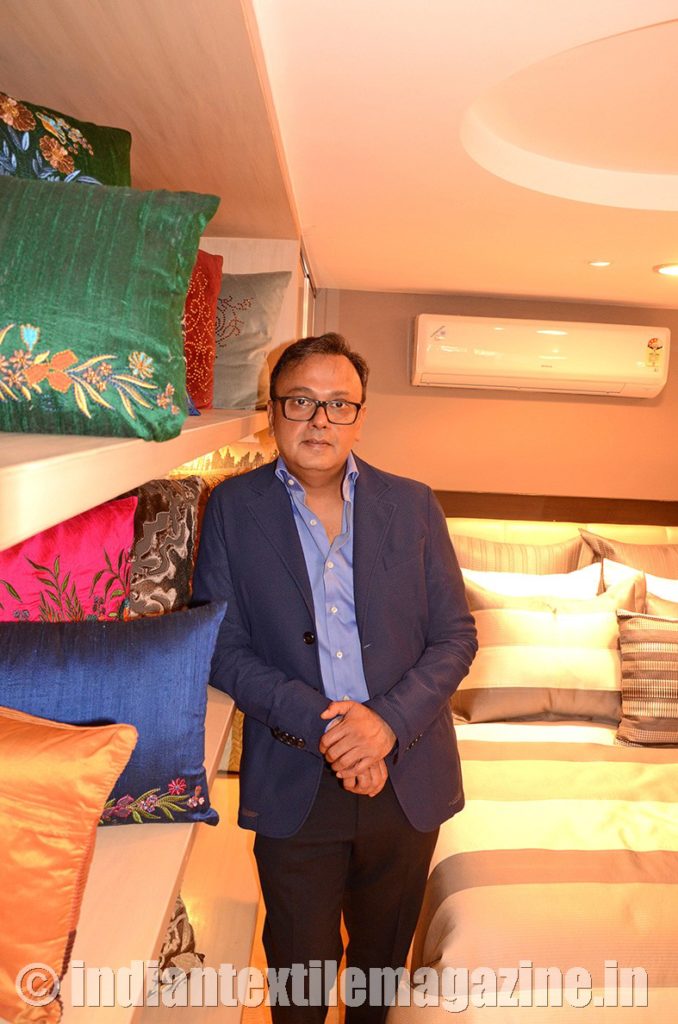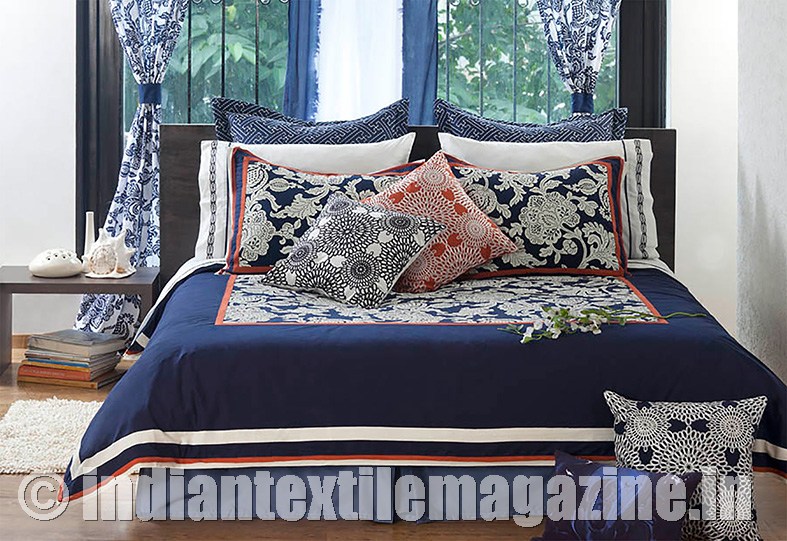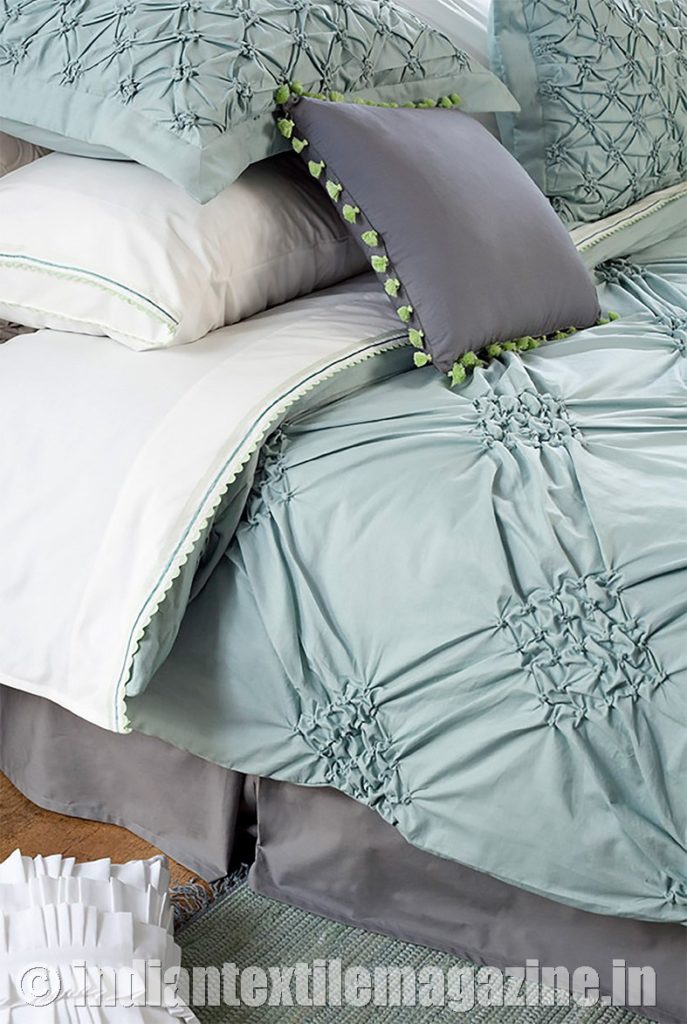Established in 1983 by Bipin Doshi, Textrade is one of those companies that grew from a humble beginning and found its way to become one of the major stakeholders in the domestic as well as international markets. It started as a home textiles company but was majorly focused on terry towels. In the 1980s the production of towels was done through handlooms, and the companies bought the products from handlooms of Madurai and Karur in the South and exported them to the Western countries. The company was also the first to explore the area of conversion of chaddar into powerlooms and start exporting.

As the business grew, Textrade started buying from northern centres like Panipat and exporting the products. In the early 1990s the company set up its designing facility to meet the growing market needs and became one of the few firms having fully-owned decent designing facility. It set up a good design team that could cater to the demand of the customers and create products according to their needs. This made it easier for customers to work with suppliers who could understand their needs, and hence, the company became popular both among its clients and non-clients.
Textrade also set up a value-added cut and sew facility in 1996 and its own manufacturing unit in Mumbai to take care of production and keep a check on the quality. By 2007 the company expanded further and opened a factory in the Surat Special Economic Zone which was a large manufacturing and post-processing unit.
The biggest challenge faced by Textrade was imports from China. However, in today’s market the popularity of the Chinese products is on the wane with their losing the cost efficiency because of the high labor cost, environment problems, etc. The Chinese products will keep losing their market share unless some corrective action is taken. China’s share of 40% of world textile exports has already dropped to around 36% and India share has gone up from 4% to 5,2%. This trend is likely to persist.
Looking from a procurement perspective, after China, India is the only country which has the complete assortment of raw materials. As a nation India is capable of turning out a product, from start to finish. Unlike countries like Bangladesh, Combodia and Vietnam, India has all sorts of raw materials needed.
According to Mr. Anish Doshi, Managing Director of Textrade, markets will move to countries which have a hold on the raw materials. India will be a major benefactor of the share that China concedes. This is indeed a silver lining for the Indian textile market. Also, with the increase in the consuming population the domestic market will experience steady growth in the coming years.
With the growing market uncertainties companies the world over are struggling to retain their shares. The business methods too have changed.
Textrade entered the Indian market in 2016. It was an export-based company and operated only in the international market. The company has now grown into a giant with yearly turnover of approximately Rs. 360 crores producing a wide range of bed linens, bath towels, curtains, table linen, etc. Spread across 72 multi-brand stores in India, the company sells its products under its home brand name Annasimona.
The products offered are different in terms of their exclusive original designs and zero compromise on quality. The company is unique with its value-adding facilities that many other companies don’t have.
Textrade has worked with brands like Armani, Kate Spade and Tommy Hilfiger & Nicloe Miller and those like Vera Wang and Ralph Lauren have been its clients for a few years. Now, the traditional brands however, are losing their charm. The expectations of the new generation are different due to which the design and patters of the industries are changing too.
In India, people aspire for brand and quality. The focus of the market is changing towards high quality products with comparatively high costs as the income level of consumers is increasing. Annasimona products are ranged from 5,000 INR to 40,000 INR due to its rich quality. Although the market is still focused on the low-cost low quality products, there is an upcoming change in the consumption pattern, and it is moving towards better quality products even in the home textiles sector. With the emergence of specialty stores and brand outlets consumers are becoming aware of the home textiles and as the affordability increases sales will increase alongside.
Another change is the growing popularity of viscose. As Mr. Anish Doshi said, “viscose will grow, and it will face challenges in the polyester-oriented market but the change will happen”. Industrial pioneer brands like Marks and Spencer and H&M are taking new initiatives in the market as well. They are moving away from the fossil fuels and fossil fuel fabrics towards natural fabrics.
GST implementation, one of the main concerns of the market at present, has dealt a blow to the unorganized industries. Textrade was unaffected by the new tax system as the company is a part of the organized sector. Moreover, according to Mr. Anish Doshi, GST was implemented for the better of the industry’s future. It was an initiative to make the economy more formal. Due to this the habits of the industry have changed, factories and the supply chain have become more structured and the infrastructure more robust. Unscrupulous manufacturers would have to improve their systems or cease to exist.
Textrade has transformed itself from a start-up into a successful company. This has been possible due to its high quality products and its capacity to cater to all the customer needs. Even in the predictable era of competition, the company is not only surviving but thriving. This growth will be steady in the future as India is a growing market where consumption and per capita income of consumers are less than a fifth of the consumers in the UK and the US. The market will grow and flourish as the income level increases.
The company vision is to double its share in the market and increase its portfolio to cover all the products in home textiles to provide a complete lifestyle package for the domestic market.

